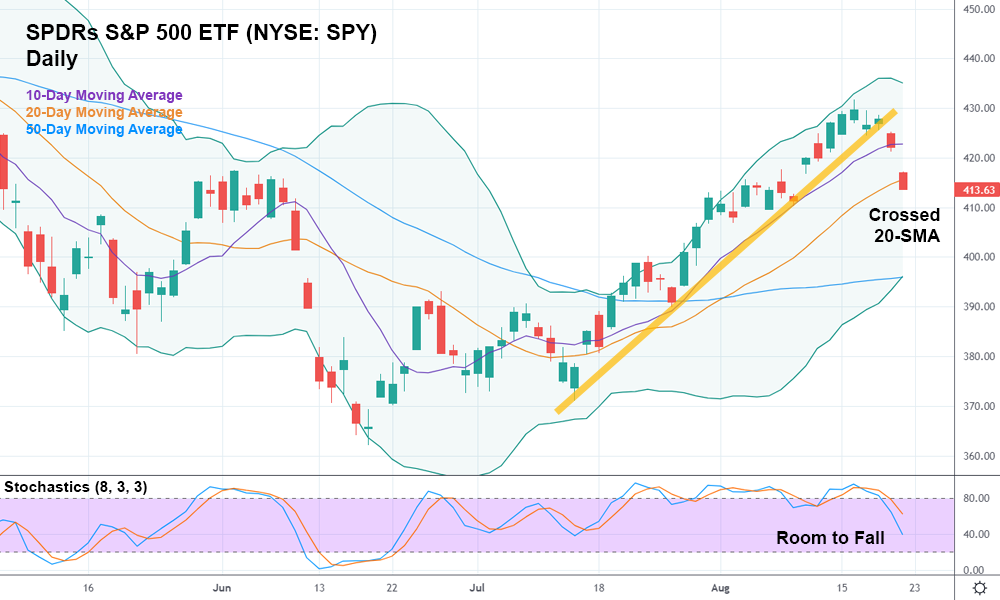Stocks cratered today as the bear market rally officially “died.” We warned last week that the Fed would soon dial up the hawkishness.
And we talked about how it could effectively end the market’s massive late July rally. Sure enough, that’s exactly what happened.
The Dow, S&P, and Nasdaq Composite all plunged over the last two trading sessions after Fed officials went “full hawk” late last week.
Now, investors are nervously awaiting Fed Chairman Jerome Powell’s next speech, which is set to be delivered at the Fed’s Jackson Hole summit this Friday at 10 am EST.
Analysts offered clients a wide range of advice this morning in anticipation of Jackson Hole.
“Markets are now […] expecting a hawkish outcome with the rally in equities beginning to reverse,” wrote Citi economist Andrew Hollenhorst, stating the blatantly obvious.
Upholdings portfolio manager Robert Cantwell offered an interesting take that investors are actually begging for more restrictive monetary policy, not a dovish pivot, moving forward.
“When you see the market right now dropping down like this, this is the market saying the Fed has to be more aggressive to slow the economy down further if they’re going to have any chance at bringing inflation back,” Cantwell said.
He must’ve missed the hawkish rhetoric from Fed Presidents Bullard and Barkin late last week that shocked stocks lower. Of course, the market was going to experience a sharp selloff at some point eventually, even without statements from the Fed.
But there’s no doubt that Bullard and Barkin got the bearish ball rolling.
Wells Fargo’s Michael Schumacher had perhaps the most accurate assessment of the many Wall Street analysts who spoke on the matter.
“I’m not convinced [Powell’s] going to pull out the talons and sound hawkish. I think the fear is he’s going to be hawkish,” Schumacher explained.
And he’s probably right. When Powell speaks, stocks go up. That doesn’t necessarily mean they continue climbing after he’s done talking, but Powell certainly has a knack for causing (sometimes temporary) afternoon spikes.

If Powell plans on changing the market’s current trend, he’ll have to deliver a real hum-dinger of a bullish speech on the economy.
The S&P (as represented by the SPY) crossed both the 10-day and 20-day moving averages over the last two trading sessions. When the index did this following a significant rally (>8.00%) over the last year, it effectively crashed each time shortly thereafter, setting new lows.
We may not see new lows this time around, but the stochastic indicator is showing us that the index has plenty of room to fall before it enters oversold territory (a reading <20 on the stochastic indicator).

Disney (NYSE: DIS) is in a similar predicament after closing below the 10-day moving average and its bullish trend (yellow trendline) this afternoon. The stock, much like the S&P, is also showing that it has more room to fall according to the moderate stochastic indicator reading.
DIS just fell below its post-earnings low, too. This type of movement typically precedes longer-term downtrends for DIS.
For those reasons, it might make sense to take DIS short with a trade trigger of $114.53, below today’s low, as the general market fights off what could be a wicked selloff to new lows.








